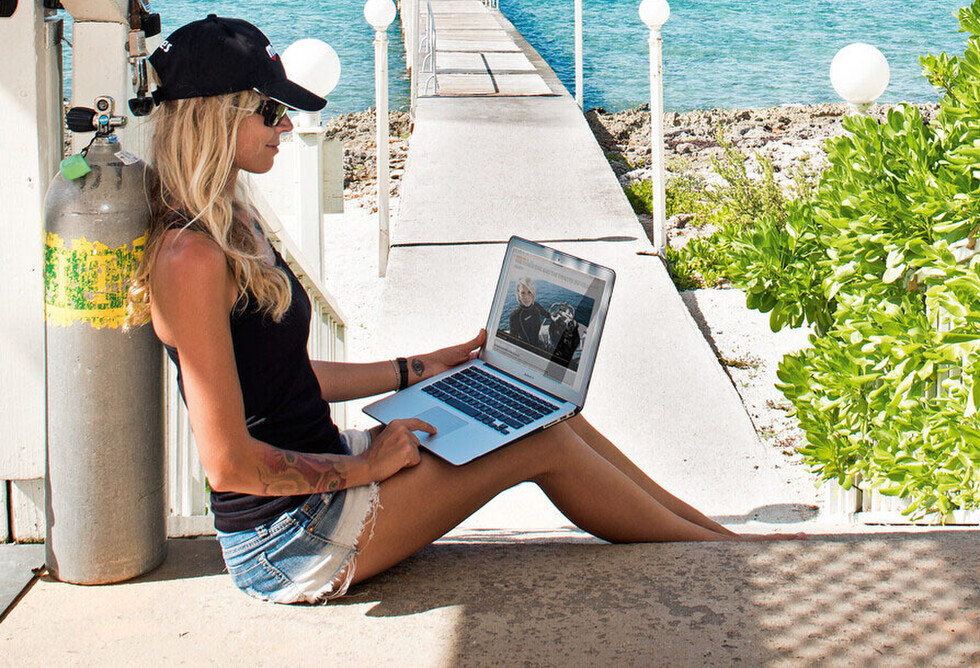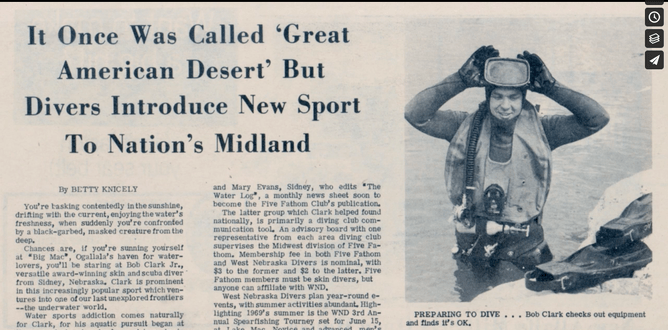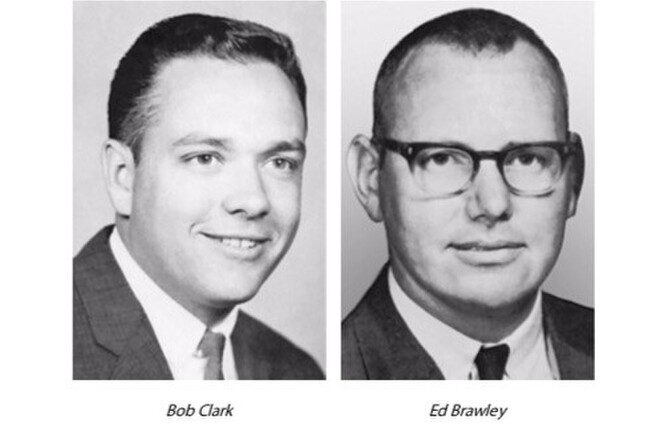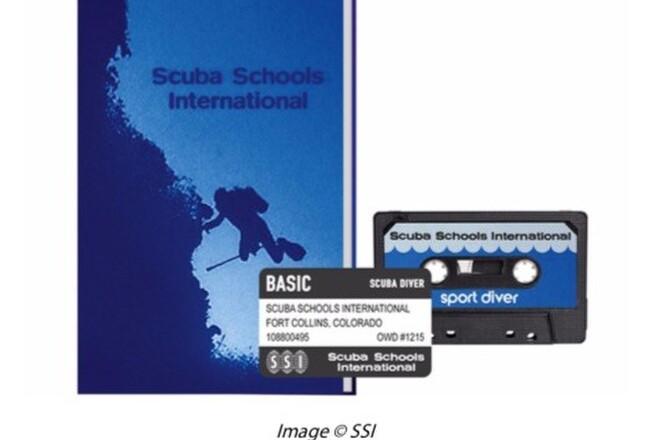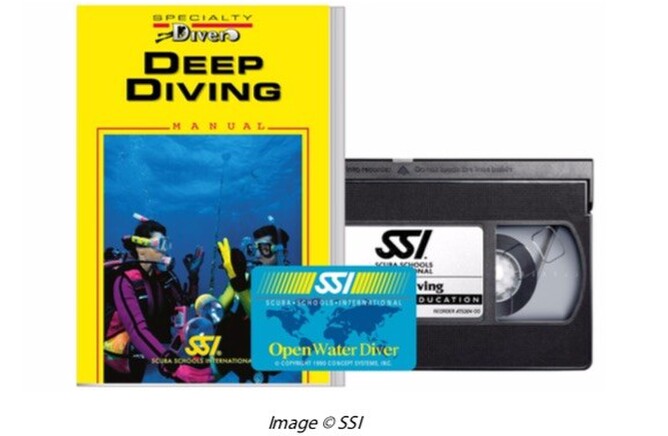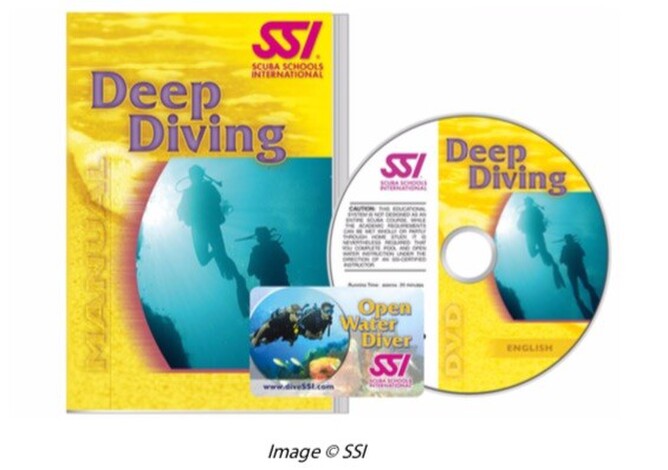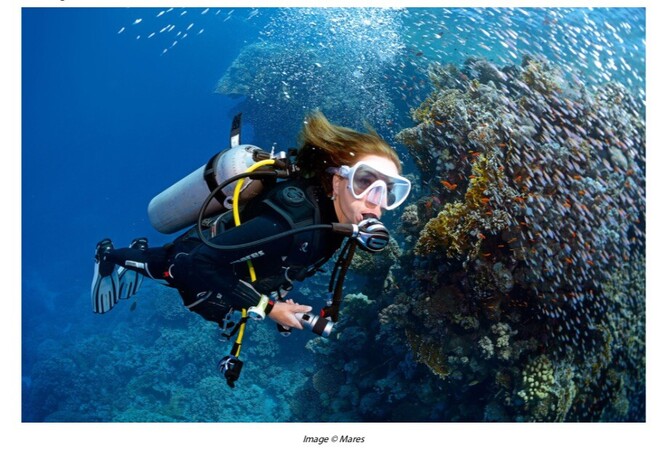Your choice for certification
When it comes to scuba diving everyone has heard of PADI, "I like to get my PADI" is still a term heard in many dive centres around the globe when customers enquire about learning to dive. However there are many, many training agencies as well as PADI - CMAS, SDI, BSAC, NAUI, RAID, ANDI, IANTD, TDI, GUE, PDA to name but a few...
One agency you have probably heard of is SSI or Scuba Schools International and we proudly wave the flag for this organisation offering a full range of their courses including recreational, technical, freediving, ecology, and professional. But do you know the history of SSI?
In part one of a two part blog we will cover the backstory on SSI from their early pioneering days to where they currently are in the market. Make yourself a cup of tea, sit back, relax and enjoy!
Bob Clark - Co founder of SSI
The Beginning
To understand the history and development of SSI, you must first have a clear vision of the diving industry before SSI began.
The industry was exciting in the late sixties. Its heart began to throb as the instructors, manufacturers, and store owners molded order into an unregulated industry that had very little direction and the reputation of being more on the radical fringe than a mainstream family activity.
In 1967, a small group of store owners, led by John Gaffney, formed NASDS, the National Association of Scuba Diving Schools.
What takes place in the years that follow is the stuff of legends, and the people involved are the real heroes of the industry.
This is the story of SSI—how it was founded, how it grew, and the people who were a part of it all.
SSI Fun Fact: As of 2020, SSI has trained more than 20 million people!
SSI is Born
In 1970, the NASDS board elected John Schuck as its new president and gave total control of NASDS to John Gaffney. As a result of this meeting, several board members resigned, including Bob Clark, Ed Brawley, Jim Brown, Chuck Nicklin, and Bud Smith, owner of DIVE Magazine.These men, who had poured their hearts and souls into NASDS and its business concepts for so long, found themselves without a certifying body. We would later see that this was the night SSI was born.
After several hours of soul searching and considering the alternatives, this group collectively decided to start an association of their own based on the materials developed for NASDS by Ed Brawley and myself. Bud Smith would run the association from Dive Magazine’s headquarters in Long Beach, and we would build the membership from NASDS members who shared our same feelings.
The name Scuba Schools International was registered the next day, and two weeks later cards were ready. With an initial membership of about fifty stores, SSI was underway.
The Founders Vision
They had a vision of what could be. Retailers wanted an agency that really understood them, one who knew how many days they worked each week and how long those days were. SSI wanted to be part of the solution and not part of the problem.
The Early Years
By 1971 it became clear that if it were to have any validity, SSI had to do something to make its presence known.The industry was growing but in an unorganised way.With a wave of new manufacturers and dealers, they had the idea to assemble all of the key players at that time in one room and see where it led.
To this end, the Denver Dealer and Manufacturer Conference was born. During the meeting, it was agreed that all industry entities had to work together and that a dealer group should be organized. The result of this historic meeting culminated in the eventual organization of the Diving Equipment Manufacturer’s Association(DEMA).
The Move to Colorado
From its inception in 1970, Bud Smith ran SSI out of the Dive Magazine office in Long Beach, California. In 1973, several members of SSI came to Bob Clark and asked that, as the president, if he would take over the operation of SSI. So, in the spring of 1973, Bob traveled to Long Beach and brought all of the materials back to Fort Collins, Colorado.
The Early Struggle
Whether it was luck, fate, or a miracle, someone or something was watching over Bob in 1973. Had he not had the chance to work with Jeppesen-Sanderson that fated year, who knows what would have become of the dream that my dealers and Bob called SSI.
The Bob Clark - Jeppesen Connection
It was 1973 when the Jeppesen-Sanderson company in Denver, Colorado wanted to talk about a new student textbook for scuba diving. Jeppesen was best known for its in-flight and approach charts for private and commercial airline pilots and their pilot training courses through the Sanderson group.
What took place next would change the way people learned to dive. Bob was assigned to staff writer John Lawson who was slated to write the training book while Bob did the technical editing. What ended up happening was that John and Bob laid out an entirely new concept for Jeppesen.
During the writing of the book, it became clear to both of us them, to make the book more effective, it needed three components: a workbook, an instructor’s guide, and audiovisuals—in short, a comprehensive educational system.
For the first time in diving education, the student could read the book, see the audiovisuals, and
then reinforce the material with the workbook. If there were questions, they were answered and
reinforced further by the instructor working from the instructor guide.
Now for the first time, the concept of SSI seemed possible. Jeppesen had opened the door by letting Bob create a teaching system that was a direct reflection of the SSI Philosophy; all Bob had left to do was meld it into a total teaching system by completing that one critical component—the instructor manual.
1974/1975
In 1974, while Bob wasworking with Jeppesen on the student text, workbook, and slide presentations, it became increasingly clear that the instructor may not know how to use these new materials properly. SSI instructors needed to know how to incorporate the Jeppesen materials with SSI standards.
This culminated in the production of the first SSI Instructor Manual. Unfortunately, a project of this magnitude posed a tremendous financial strain on SSI. Without the help of friends, family, neighbours, and the understanding and support of the Citizen Printing Company in Fort Collins, the instructor manual probably would not have been produced.
The concept and philosophy of instruction that was developed in the early seventies has remained
intact and is still the heart and soul of the SSI Education System.
The Jump to Six Open Water Dives
For Bob, the desire to create a program of instruction that generated the highest possible quality of students was paramount. Bob learned an important lesson early on from training his son. After several hundred hours of actual dive experience, would he be “ready” to dive with other buddies beside him?
This inspired the philosophy that every SSI student was someone’s son or daughter and had the right to expect the same level of training and achievement as Bobs son.
Armed with these unbreakable criteria, in 1975 Bob decided that SSI’s entry-level scuba program would require six open water dives for certification. We would call it the Advanced Open Water Diver course. Bob strongly felt that all of the other agencies would follow suit within two years; however, the reality was that it didn’t happen until 1984, eleven years later.
This seemed to be the niche that SSI was looking for; a small but elite company that competed not on being the first or the biggest, but on doing the best job they could do.
The Initial Growth Period
When a business begins to grow, there are usually two main problems: “how to grow” and “getting the right people to help make it happen”. Fortunately, in 1976 when SSI really started to grow, there were a large number of new stores opening. So, between these new stores and the old ones who were ready to move from their current agency, there were more than enough stores to meet the growth capabilities of SSI.
SSI Plays Catch-Up with Products
In December 1977, SSI moved into their permanent home; a 3000-square foot office building built just for them. It is hard to say whether this move allowed SSI to grow or forced it to, but either way, the move represented a big commitment to SSI, kicking new product growth into high gear.
As SSI began the catch-up process, the SSI staff and a core group of SSI members collectively decided that products would be developed only when there was a specific need. The products that began to emerge, such as a simple logbook system and cue cards for instructors, were not very exciting but certainly practical.
As the product mix began to grow, more dealers recognized the quality of what SSI was doing and began to join our growing ranks. This in turn gave SSI more funds to accelerate the development process. This cycle continued into the mid-1980s, allowing SSI to fill in many of the holes they initially saw in the educational system.
Through their vision and growth, SSI provided most of the products that members needed to run successful dive businesses. It was now time for the next step, to begin developing SSI-specific programs and to refine those that were already introduced.
The best was yet to come. Bringing Ed Christini and other new staff members on board in the mid- eighties allowed SSI to begin working toward its dream.
The Eighties
In 1981, SSI received a letter from Lim Hau Peng in Singapore stating that he would like to provide SSI certifications for his students. He also indicated an interest in setting up other dealers in the region surrounding Singapore, training their instructors to issue SSI certifications as well.
Since this was before the magic age of email, it took nearly two years of correspondence by letter to work out all of the details. Based on the concept of mutual trust, the first SSI Regional Center was established in 1983.
The Ed Christini Era
Without question, the greatest period of growth for SSI began in 1984 when Ed Christini moved to Fort Collins and joined the team. With his extensive background in retail and years as an SSI field representative, he understood the system well. However, what really made the difference was Ed himself.
Ed brought with him an incredible work ethic. From day one he worked tirelessly to make SSI the best it could be. Ed treated SSI as though it were his own. Over the years, Ed rose from Director of Membership to Executive Director, and, finally, to President of SSI, acquiring some ownership of the company over this time.
SSI Tackles Full-Motion Video
SSI made the financial commitment in the mid-eighties to develop videos to support their written materials. They knew that video was the key to the future, and SSI could be the first agency to develop full-motion videos to support their programs.
The Development of the Open Water Diver Program
The Open Water Diver program, like the instructor manual, is more than just a product - these two programs create the foundation of the SSI teaching system. In 1988, the Jeppesen company approached SSI with an offer to sell the Jeppesen products, turning them over to SSI. At this point, the entire SSI staff was called together where each and every person, without hesitation, voted to create our own program.
SSI believed that one way or another, they could get it done by the DEMA show. By some miracle, the products were ready for shipment in January 1990.The incredible teamwork of the SSI staff and the many dealers that helped with technical editing and practical application of the materials made it all possible.
The program was the talk of the 1990 DEMA show and met with more success than we could have dreamed. SSI now had the most up-to-date teaching system on the market. It was the only complete training system that incorporated a full-motion video with the other components, such as the text, workbook, and instructor manual.
SSI was now the leader in training material production. They were finally ready to make a difference and become established as one of the leading certification agencies in the United States and the world.
The Nineties - SSI Product Development
Product development has been a big part of SSl’s success. After all, what is a certification agency but a supplier of education materials?
While the development of the Open Water Diver program was just the beginning of many outstanding products, many of the SSI team believed that it was a “defining moment” in the evolution of SSI itself. Once SSI introduced this program, they set out to complete the SSI teaching system, translating it into several different languages.
Staying true to the original policy from 1977, SSI has since introduced new programs such as the Ecology Specialty programs, the Diver Stress and Rescue Program, and the Assistant Instructor program, including supporting materials that continue to set SSI apart. These products never went on the market until they were reviewed by a group of SSI dealers and instructors who would use them.
Using this test and review process is what allowed SSI's products to be practical, useful, marketable, and some of the best on the market!
SSI Fun Fact: Did you know that SSI currently offers more than forty-four specialty programs? With SSI you can learn about any type of diving.
Changing the Model
In 1999, SSI began thinking of itself in an entirely new way. SSI believed they could offer more than just diver education, and that they could develop a retail system that used education to increase sales, customer loyalty, and profitability. The catalyst for this groundbreaking concept was the merger between SSI and NASDS, adding Doug McNeese to the SSITeam and starting another important chapter in our history—growth in the international market.
SSI recognised that their strength would be the seamless integration of SSI’s education system and NASDS’ retail support expertise. The result was a newly developed business model called the Customer Loyalty Cycle that combined the NASDS Safe Diver’sTriangle and SSI’s existing education system.
The goal of this four-step structure was to maximize the potential of every diver by making them a customer for life. Based on that same philosophy, SSI designed a revolutionary business support program called SSI Scuba University. Since its inception, Scuba University has inspired thousands of training centres, resorts, and professionals around the world.
The Year 2000
The Open Water Diver revision was one of the most ambitious projects ever undertaken by SSI Product Development. The goal was to change the open water program from a “soft sell” to a “customer-driven” approach. SSI had to merge the NASDS and SSI programs while still satisfying our retailers, instructors, and international regional black and white textbook-style materials had to be upgraded to full colour manuals and SSI had to produce the industry’s first training DVD.
Accomplishing this revision was a huge step forward in SSI’s educational standards, and within the industry at large. Confirmation that SSI were leading the way in diver education came when SSI earned the American Council on Education (ACE) approval for four programs, validating the quality of SSI instructional design methodology and educational materials.
The Millennium
During the nineties and into the new millennium, the growth of the diving industry was exciting! Diving opportunities rapidly opened all over the world, and the demand for SSI was at an all-time high.
Up to this point, SSI mainly focused on the needs of the retail market and lost a bit of focus on the resort market. It was the right time for a team of three passionate and entrepreneurial guys to become the guiding force behind SSI—Doug McNeese, Robert Stoss, and Guido Waetzig. Doug had already spent more than thirty-five years in the diving industry developing a proven business and education model for dive retail. For twenty-five years, Robert had been developing, perfecting, and manufacturing the products that dive retailers sell, and Guido had worked for ten years in resorts, dive education, equipment sales, and product development.
The combination of seventy years led the future direction of SSI, not by looking in the rearview mirror, but rather looking ahead at the changes that needed to be made to perpetuate the health and growth of SSI and the industry they loved!
SSI Fun Fact: Diving is a sport for everyone—age does not matter: SSI's oldest active male diver is 98 and female diver is 95!
Part two of the history of Scuba Schools International coming soon - Stay tuned!
